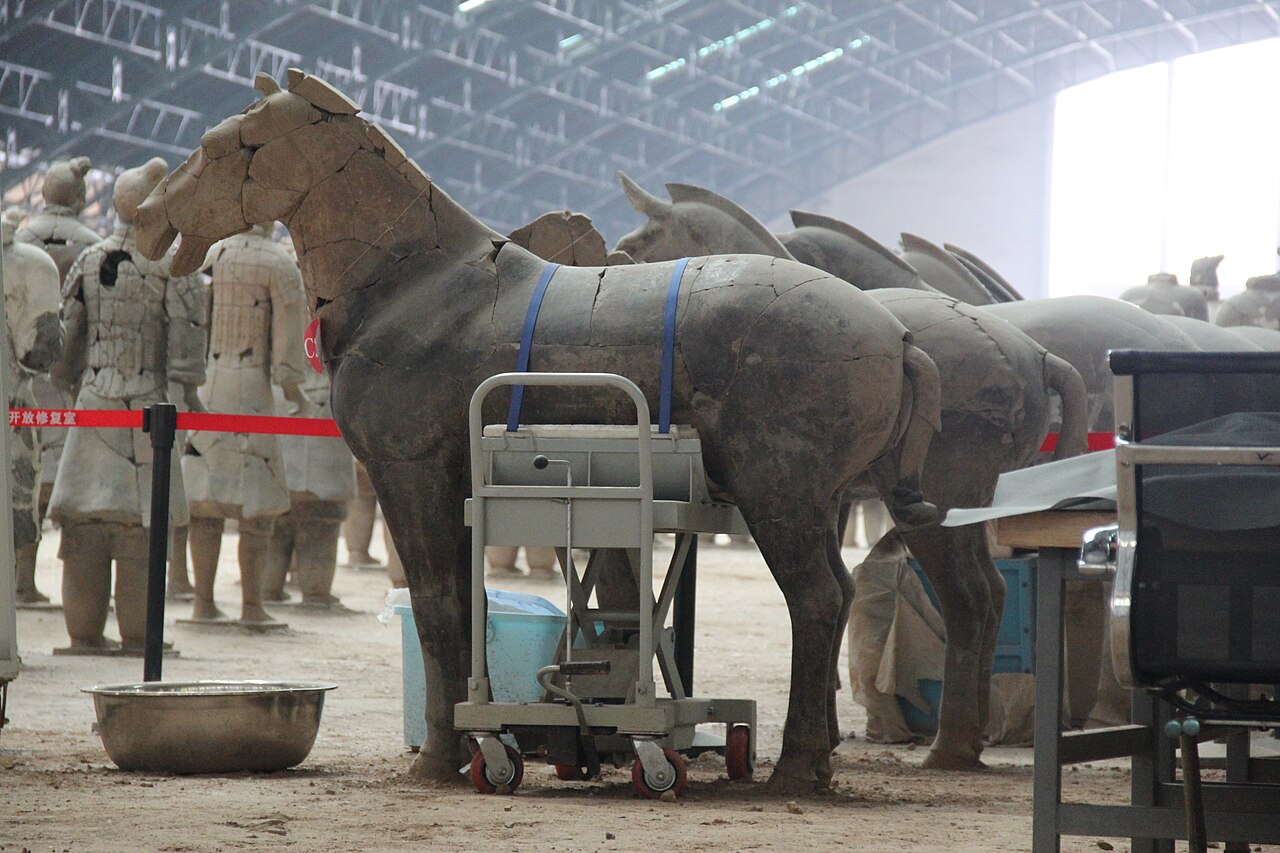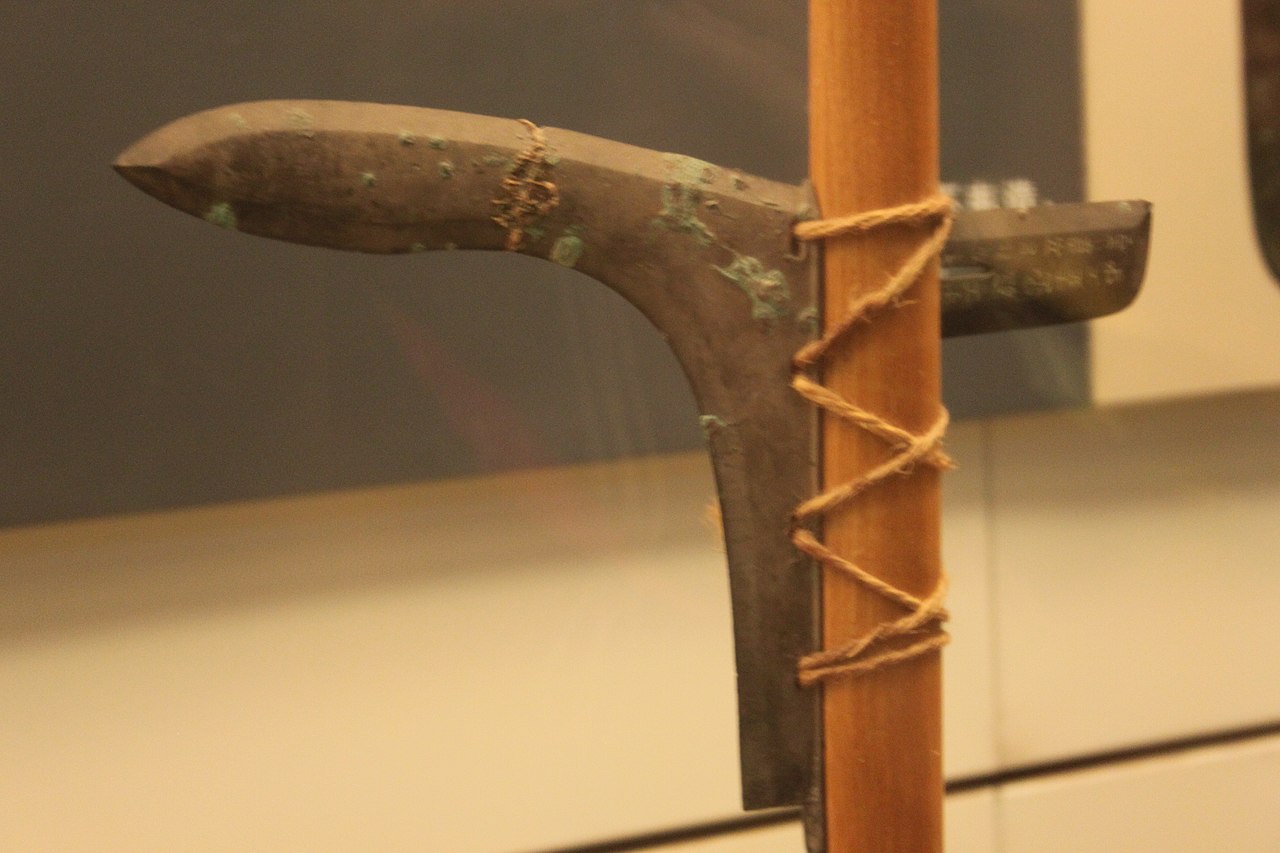Behold The Terracotta Army
It’s not unusual for the tombs and burial sites of important leaders to be more grand than the people they led—just look at the Pyramids of Giza for a well-known example. But few burial sites can hold a candle to the necropolis of the First Qin Emperor of China and his incredible Terracotta Army.

Army For The Departed
The Terracotta Army is an incredible archaeological and artistic find. A designated World Heritage Site, the pits in Emperor Qin’s mausoleum hold thousands of life-size statues of warriors, politicians, and acrobats. The warriors stand guard over the Emperor’s still-unopened tomb.
 Unknown Author, Wikimedia Commons
Unknown Author, Wikimedia Commons
Figures For The Figures
Although many of the figures in the army were broken upon discovery, archaeologists have estimated how many of each piece the various pits at the site contain. There are over 8,000 soldiers, 130 chariots, almost 700 horses, and various officials, acrobats, and musicians.
China In The 2nd Century BCE
Before the ascension of Qin Shi Huang to the throne of Qin, China was composed of several warring states. Qin Shi Huang decided against using the title of “king”, instead creating the title of “emperor” for himself.
 Unknown Author, Wikimedia Commons
Unknown Author, Wikimedia Commons
The First Dynasty
Qin Shi Huang was only 13 years old when he assumed the throne of Qin. By the age of 38, he had conquered and united the warring states of China. Emperor Qin was the first in a long line of emperors and dynasties that would rule China for millennia to come.
 Xi'an Film Studio, The Emperor's Shadow (1996)
Xi'an Film Studio, The Emperor's Shadow (1996)
The Mausoleum Of The First Qin Emperor
It may seem macabre, but work on Emperor Qin’s mausoleum began shortly after he took the throne at 13 years old. The project began in earnest only after he unified China. Qin Shi Huang perished at the age of 49, in 210 BCE.
 TVB, A Step into the Past(2001)
TVB, A Step into the Past(2001)
A Decades-Long Project
The scope of the Emperor’s tomb meant that it would take decades to complete. It took 38 years to complete and was only properly finished 2 years after the Emperor had passed on. Part of the reason for the length of construction was the incredible Terracotta Army that accompanied the Emperor to his rest.
 Aaron Zhu, CC BY-SA 3.0, Wikimedia Commons
Aaron Zhu, CC BY-SA 3.0, Wikimedia Commons
Historical Accounts
A few centuries after the completion of the tomb, Chinese historians offered accounts of the construction of the tomb and the army. Up to 700,000 laborers contributed to building the tomb, and one account claims that when the work was done, the workers were sealed in the tomb to protect its secrets.
 Tomasz G. Sienicki, CC BY 1.0, Wikimedia Commons
Tomasz G. Sienicki, CC BY 1.0, Wikimedia Commons
A City In Miniature
The mausoleum takes its layout from the city of Xianyang, the capital of the Qin dynasty. Historical records claim that mercury flowed through the tomb to depict rivers in the area, and the roof of the tomb was decorated with constellations visible from the city itself.
 Zossolino, CC BY-SA 4.0, Wikimedia Commons
Zossolino, CC BY-SA 4.0, Wikimedia Commons

History's most fascinating stories and darkest secrets, delivered to your inbox daily.
An Unopened Tomb
In the decades following the discovery of Emperor Qin’s mausoleum, one piece of the complex has not been disturbed: the burial mound of the Emperor. Various techniques have determined that the tomb of the Emperor is located in a vast palace buried far below the overgrown surface of the mound.
 Bairuilong, CC BY-SA 4.0, Wikimedia Commons
Bairuilong, CC BY-SA 4.0, Wikimedia Commons
Historical Precedents
The size and scope of the Terracotta Army was very new at the time. Prior to this army, there were only small and exceedingly rare examples of terracotta sculpture. After Emperor Qin’s burial, more armies, though of smaller stature, showed up in burial chambers.
 Unknown Author, CC BY-SA 3.0, Wikimedia Commons
Unknown Author, CC BY-SA 3.0, Wikimedia Commons
Over 2,000 Years Later…
Although there were records, the mausoleum itself faded into history. Over two millennia later, in 1974, an accidental discovery by a group of farmers brought the tomb, and its amazing army, to light once more.
 Kougo, CC BY-SA 3.0, Wikimedia Commons
Kougo, CC BY-SA 3.0, Wikimedia Commons
More Than A Well
Knowing that there were underground springs in the area, farmer Yang Zhifa and his family began digging a well east of the Emperor’s tomb mound. The same area was known for centuries to be a source of pottery chunks, figures, and roofing tiles.
 Lingtft, CC BY 3.0 , Wikimedia Commons
Lingtft, CC BY 3.0 , Wikimedia Commons
A Broken Army
The original accidental discovery of the mausoleum turned up many broken fragments of terracotta figures. The recovery of these pieces, and their subsequent reconstruction, led archaeologists to believe that a greater discovery lay in store.
 palindrome6996, CC BY 2.0, Wikimedia Commons
palindrome6996, CC BY 2.0, Wikimedia Commons
Excavation Proceeds
In May 1974, archaeologists from Shaanxi began work at the site. Their excavations would eventually lead to the site known as Pit 1, a prominent feature of the mausoleum and home to many incredible terracotta warriors. 2,000 years of dirt and sediment had to be cleared away.
Pit 1
The first area uncovered contained the bulk of the Terracotta Army. Over 3,000 figures stand in corridors 10 feet wide. The corridors were paved with small bricks and had a wooden ceiling that was designed to resemble the hallways of the imperial palace.
 Zossolino, CC BY-SA 4.0, Wikimedia Commons
Zossolino, CC BY-SA 4.0, Wikimedia Commons
Pit 2
Two years later, a second pit was discovered in the complex. This one housed mainly cavalry and battle chariot figures. Rather than an army proper, these figures are thought to represent an army guard that would be deployed for the Emperor when he traveled.
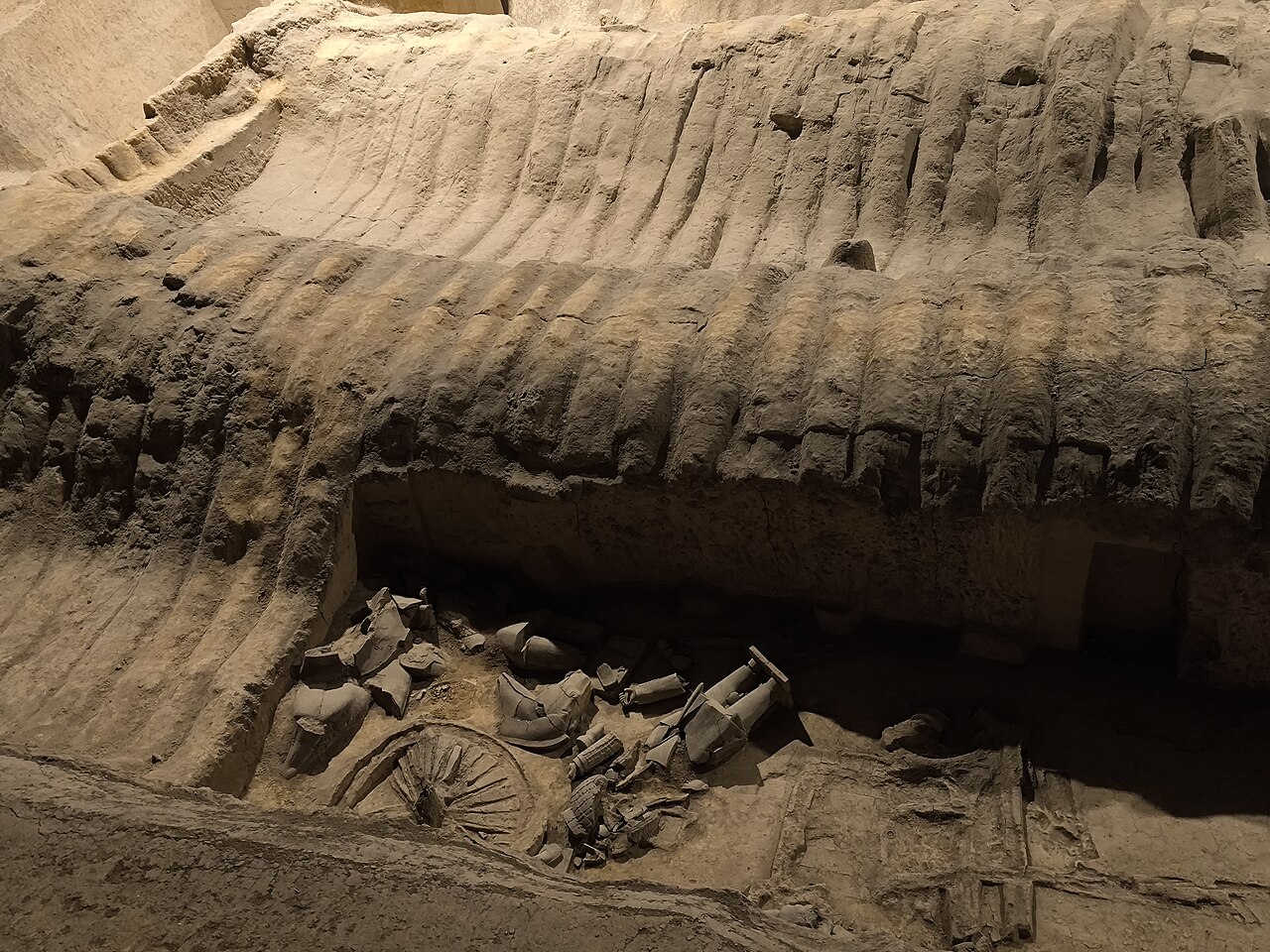 源義信, CC BY-SA 4.0, Wikimedia Commons
源義信, CC BY-SA 4.0, Wikimedia Commons
Pit 3
The same year, 1976, a third pit of figures was discovered, this time containing officers and a battle chariot. It is thought to represent a command post for the Terracotta Army. A fourth pit was also unearthed, but was empty, perhaps left unfinished.
Protecting The Area
By 1979, more than 20,000 square meters of pits had been unearthed, containing over 7,000 terracotta figures, wooden chariots, and weapons. Large structures were erected over the site to protect this incredible archaeological find.
 BrokenSphere, CC BY-SA 3.0, Wikimedia Commons
BrokenSphere, CC BY-SA 3.0, Wikimedia Commons
Terracotta Sculptures
Though called the Terracotta Army, the figures in the mausoleum are made of diverse materials. The main figures are terracotta, a clay-based material. The material has been discovered in archaeological sites from over 5,000 years ago.
The Warriors
The bulk of the army is made up of terracotta warriors. What is sometimes difficult to tell from pictures of the site is that they are actually life-sized. The figures range from 5 ¾ feet to about 6 ½ feet in height. The taller figures are often the officers and leaders.
Warrior Individuality
Scholars think that the faces of the warriors were originally cast from 10 standard forms. Artisans would then add different features to each face, from scars to facial hair, so that each warrior had a distinct look and identity.
Not So Uniform
The figures are dressed in armor that would be typical of soldiers and officers in the Imperial ranks. However, as a way to further make each warrior distinct, the armor was placed in different ways on different figures. For example, some have shin guards and some do not.
Not Just People
Among the over 8,000 human figures in the Terracotta Army, there are also hundreds of horses. Some carry soldiers as cavalry, while others pull chariots of the officers. These incredible animal sculptures are also life-size.
A Colorful Tribute
When we see the Terracotta Army today, the figures are a whitish-gray, the color of the material from which they were formed. Originally, however, the figures were painted with an array of colors to make them more lifelike. Exposure to the dry air of the region caused the original paint to dry and flake off.
Building The Army
The terracotta figures were built in pieces at workshops and then assembled at the mausoleum site. Standard forms were used to create the parts of the warriors, and then artists would add details to each figure to give them individual looks and identities.
 Maros M r a z (Maros), CC BY-SA 3.0, Wikimedia Commons
Maros M r a z (Maros), CC BY-SA 3.0, Wikimedia Commons
A Grave Discovery
Perhaps lending some evidence to historical accounts, a mass grave was discovered near the site in 2003. The remains are thought to be those of workers on the site. The 121 skeletons identified in the grave belonged to people aged 15 to 40 years old.
 BrokenSphere, CC BY-SA 3.0, Wikimedia Commons
BrokenSphere, CC BY-SA 3.0, Wikimedia Commons
The Acrobats
In 1999, another set of figures was discovered, but they had a far less combative feel about them. They have been called “The Acrobats” by archaeologists. Their purpose is unclear, but they demonstrate a wide variety of poses and show a very sophisticated understanding of human bodies and movement by the original artists.
 James Glazier, CC BY-SA 4.0, Wikimedia Commons
James Glazier, CC BY-SA 4.0, Wikimedia Commons
Both Less And More
Only a dozen or so Acrobats have been recovered and reconstructed from the site. These figures are far less stylized than the warriors. They seem to have been sculpted to be far more lifelike, wear only loincloths, and are more varied in their body types than the warriors.
 the-lonely-push-biker, CC BY-SA 2.0, Wikimedia Commons
the-lonely-push-biker, CC BY-SA 2.0, Wikimedia Commons
East Meets West?
The depiction of human form in the terracotta figures is similar to other naturalistic depictions in Ancient Greece at the time. Some historians argue that this may point to meetings between Eastern and Western cultures of the period. Others dispute this, arguing that naturalistic art could have developed independently.
 ·˙·ChinaUli2010·.·, CC BY 3.0, Wikimedia Commons
·˙·ChinaUli2010·.·, CC BY 3.0, Wikimedia Commons
Armed Art
The Terracotta Army was not armed with terracotta weapons and armor—those were all real. It’s thought that many of the original pieces were looted from the site shortly after it was completed.
A Variety Of Armaments
Over two millennia, some of the weapons of the army have rotted away, but many remained. Over 40,000 individual items, including swords, lances, shields, and suits of armor have been recovered from the site.
 Shashi Bellamkonda, CC BY 2.0, Wikimedia Commons
Shashi Bellamkonda, CC BY 2.0, Wikimedia Commons
The Science Of The Sculptures
Although crafted thousands of years ago, the Terracotta Army was produced using some very sophisticated techniques. Both Han Blue and Han Purple are colors originating in China. A 2007 scientific inquiry determined that the techniques came from ancient Taoist alchemy intended to create synthetic jade.
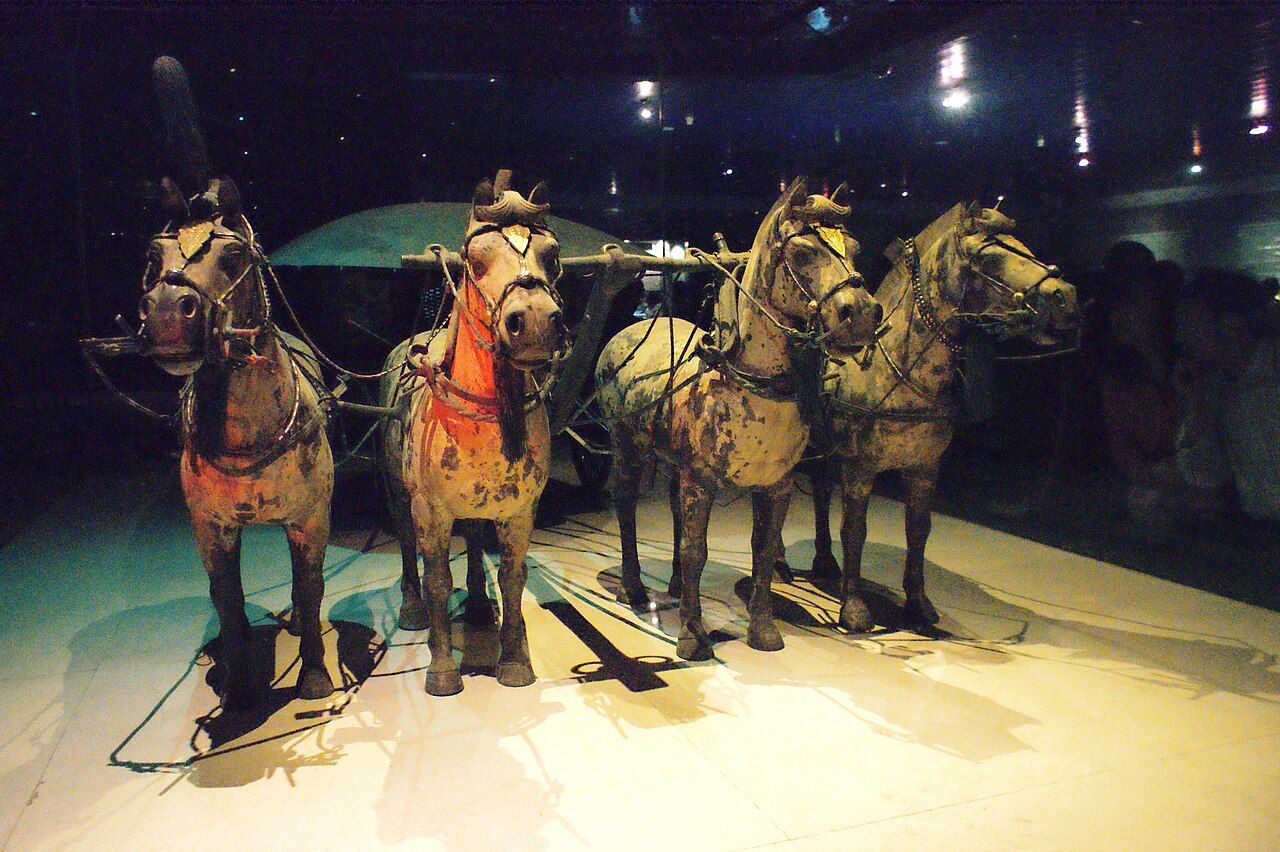 Hugh Llewelyn, CC BY-SA 2.0, Wikimedia Commons
Hugh Llewelyn, CC BY-SA 2.0, Wikimedia Commons
Weapons Technology
Other scientific investigations of the warriors and their armaments focused on the grinding and polishing marks visible on individual pieces. Analysis of these markings suggests that the Terracotta Army represents the earliest use of lathes for polishing and finishing pieces.
 jesse, CC BY-SA 4.0, Wikimedia Commons
jesse, CC BY-SA 4.0, Wikimedia Commons
A Tomb On Tour
Not quite a decade after its discovery, and thousands of years after its creation, the Terracotta Army ventured outside the confines of China and fascinated the world. The first tour took the figures south to Australia, where they were exhibited in Melbourne in 1982.
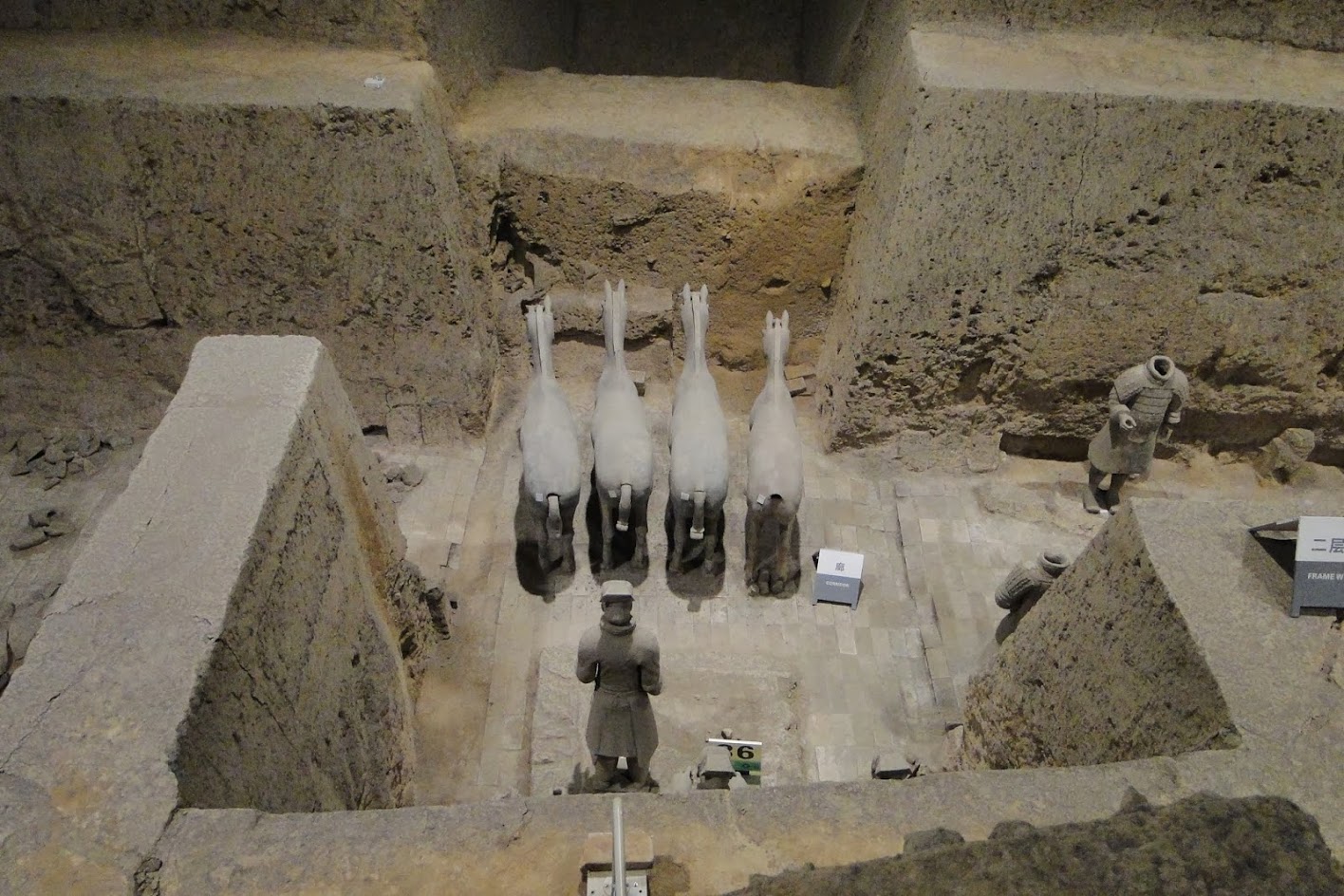 Leon petrosyan, CC BY-SA 4.0 , Wikimedia Commons
Leon petrosyan, CC BY-SA 4.0 , Wikimedia Commons
Ongoing Exhibition
Since the first exhibit in the early 1980s, figures from the Terracotta Army, or replicas of it, have been regularly featured in museums around the world. 12 figures from the army visited the British Museum in 2007 and gave the museum its most successful year since 1972.
A Popular Attraction
Proving that they fascinate audiences the world over, an exhibition in Barcelona in 2004 also gave the Forum de Barcelona its most successful attraction ever. A museum in Madrid hosted the same exhibit, and it too ranked as one of the most successful in the museum’s history.
 Victor Fraile Rodriguez, Getty Images
Victor Fraile Rodriguez, Getty Images









